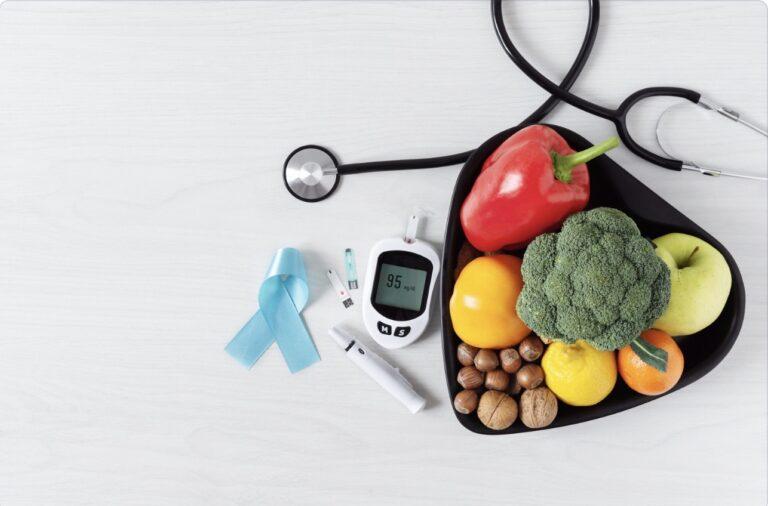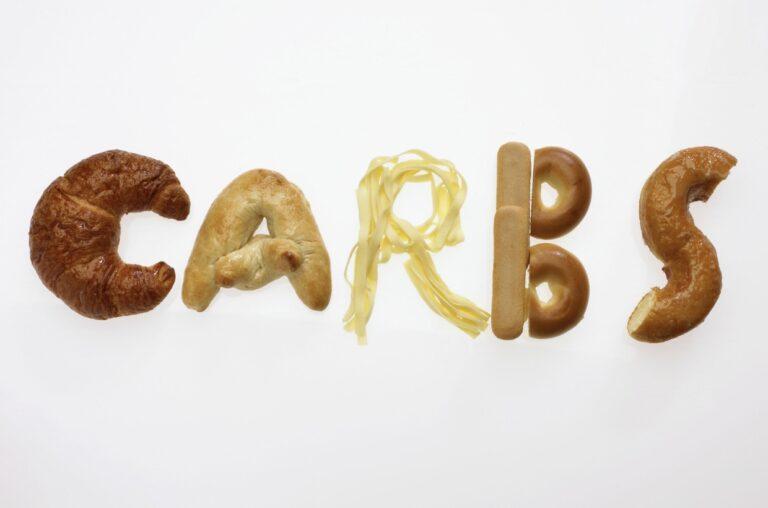Living with diabetes can be a challenge, especially when it comes to making healthy food choices. But fear not! With the right knowledge and tools, you can easily manage your condition through proper nutrition. In this blog post, we’ll share tips on how to make healthy food choices that will help you keep your blood sugar levels in check and live a healthier life overall.
Understanding diabetes and nutritional needs
When you have diabetes, it’s important to make healthy food choices that help manage your condition. To do this, focus on incorporating balanced meals with a variety of carbohydrates, proteins, and fats. Carbohydrates can be found in many foods such as bread and dairy products but consider alternatives like beans for added protein and fibre.
It’s also essential to monitor your carbohydrate intake since carbs affect blood sugar levels the most. Try to limit high-carb foods while including plenty of low-carb options like vegetables in your diet. By making smart nutritional choices, you can help prevent complications associated with diabetes while still enjoying delicious meals.
What is diabetes and how does it affect nutritional needs?
Diabetes is a condition in which the body cannot effectively process glucose, leading to high blood sugar levels. There are two main types of diabetes: type 1 diabetes and type 2 diabetes. Symptoms may include increased thirst, frequent urination, blurred vision and fatigue.
When someone has diabetes, their body’s ability to process food changes. Carbohydrates have the biggest impact on blood sugar levels; this means that monitoring carbohydrate intake is important for controlling blood sugar levels in people with diabetes. Insulin plays a vital role in regulating blood glucose levels, by helping cells take up glucose from the bloodstream after having eaten carbohydrates.
Some alternatives for carbohydrates include beans or bread made from whole grains, instead of refined white flour products like white rice or pasta, made with enriched wheat flour. Dairy can also be consumed but it should be balanced out with other sources of protein because dairy contains carbs too!
Basic nutritional guidelines for people with diabetes
Balancing the right amount of carbohydrates, proteins, and fats in your diet is essential for maintaining healthy blood sugar levels. It’s important to choose balanced meals that are low in carbs but high in protein and fibre-rich foods like beans, bread alternatives, and dairy products. This can help you avoid spikes or drops in your blood sugar levels.
Choosing low glycemic index foods is also an excellent way to control your blood sugar levels. Low glycemic index foods have a slower digestion rate which means they won’t cause sudden spikes in glucose levels. Incorporating fibre-rich foods into your meals can help improve digestion while nutrient absorption helps maintain a well-functioning body system.
- Balance carbohydrates, proteins, and fats for healthy blood sugar
- Choose low glycemic index foods to avoid glucose spikes
- Incorporate fibre-rich food options for better digestion
Tips for making healthy food choices
Making healthy food choices can have numerous health benefits for diabetics. Not only can it aid in weight loss and achieving a healthy weight, but it can also help manage blood sugar levels and prevent diabetes complications. By adopting healthy eating habits, diabetics can decrease the risk of heart disease, stroke, nerve damage and reduce cholesterol levels. Additionally, healthy eating habits can prevent or delay the onset of pre-diabetes.
When making healthy food choices with diabetes, opt for high-fibre foods and whole grains as they can help regulate blood sugar levels. Say no to processed foods and sugary drinks that are often packed with calories. Instead, choose healthy protein sources such as lean meats, fish or beans. By choosing the right types of food, you can manage your condition more effectively and lead a healthier lifestyle overall. Also, it is essential that physical activity is an important part of a healthy lifestyle when you have diabetes.
Focusing on fibre and whole grains
When it comes to managing diabetes, choosing the right foods is crucial. Focusing on fibre and whole grains is a great place to start. Look for whole-grain bread, wholewheat rice and pasta, These options will provide more fibre than their refined counterparts.
Another way to add more fibre to your diet is by incorporating fruits and vegetables with high fibre content into your meals. Some examples include raspberries, pears, broccoli, and sweet potatoes.
Lastly, choose snacks that are high in fibre like nuts or seeds to keep you feeling full between meals. By focusing on these types of nutrient-dense foods you can help manage blood sugar levels, while also promoting overall health and wellness as someone living with diabetes.
Choosing healthy sources of protein
When it comes to choosing healthy sources of protein, there are a few things to keep in mind for people with diabetes. Opting for lean protein sources such as chicken or fish instead of red meat can help maintain blood sugar levels and keep cholesterol in check. Additionally, incorporating plant-based proteins like beans, lentils, or tofu into meals is a great way to add variety and increase fibre intake.
On the flip side, it’s important to avoid processed meats like sausage or bacon which are high in fat and sodium. These types of foods have been linked to an increased risk of heart disease and other health complications that can be particularly harmful to those with diabetes. By focusing on whole food sources of protein, individuals with diabetes can make healthier choices that support their overall well-being.
Avoiding processed foods and sugary drinks
Making healthy food choices is essential when you have diabetes. Processed foods and sugary drinks can be harmful to your health. One way to avoid added sugars in packaged foods is by reading food labels carefully. Instead of soft drinks or juice drinks, opt for water infused with natural flavours, such as lemon or cucumber. It’s also important to steer clear of fast food meals that can be high in saturated fat and sodium levels, which are harmful to those with diabetes. By avoiding processed foods and sugary drinks, you can take control of your diet and make healthier choices for managing your condition.
Meal planning and portion control
Creating a balanced eating plan and using portion control are essential for managing diabetes. When planning your meals, aim to include a variety of nutrient-dense foods such as vegetables, lean proteins, and whole grains. Avoid processed foods high in sugar and unhealthy fats. Using smaller plates or measuring cups can help with portion control while ensuring you eat the right amount of food for your body’s needs.
It’s important to pay attention to portion sizes at each meal if you have diabetes because it affects blood sugar levels. Eating larger portions can cause spikes in blood sugar that lead to complications over time. By creating a balanced meal plan and using portion control techniques like measuring tools or visual cues, you’ll be able to maintain stable blood sugar levels throughout the day. Remember that making healthy food choices is an ongoing process – small changes every day can make a big difference in managing your condition over time!
Creating a balanced meal plan
Incorporating more whole foods into your diet is a great way to create a balanced meal plan that supports your overall health and helps manage blood sugar levels. Whole foods include fruits, vegetables, whole grains, lean proteins and healthy fats. By focusing on these nutrient-dense options you can feel fuller for longer periods of time while also providing your body with the energy it needs to function properly.
The Glycemic Index is a measure of how quickly a food raises blood sugar levels. Foods with a high glycemic index can cause a rapid spike in blood sugar levels, which is not ideal for people with diabetes. To avoid this, try to choose foods that have a low glycemic index. Some examples include whole grains, non-starchy vegetables, legumes, fruits, and nuts.
Choosing low-glycemic index carbs like oats, quinoa or sweet potatoes will help you stay full longer than high-glycemic index carbs which cause blood sugar spikes and crashes. Including lean proteins such as chicken breast or fish in each meal can provide sustained energy throughout the day without causing sudden spikes in blood glucose levels.
- Incorporate more fruits and vegetables into every meal
- Choose complex carbohydrates over refined carbohydrates
- Include lean protein sources such as poultry or fish
By creating a balance between whole foods, low glycemic index carbs and lean proteins you can effectively manage your diabetes while still enjoying delicious meals that leave you feeling satisfied throughout the day.
Using portion control to manage blood sugar levels
Measuring serving sizes with kitchen tools or a food scale is an easy and effective way to manage blood sugar levels. It allows you to accurately portion your meals according to the recommended daily servings of each food group. Reading nutrition labels can also help you determine appropriate portions, as they provide information on serving size and carbohydrate content.
It’s important to avoid overeating by eating slowly and mindfully. This means taking time to savour each bite, putting down utensils in between bites, and avoiding distractions like television or phones during mealtime. By practising portion control and mindfulness when eating, individuals with diabetes can better manage their blood sugar levels and maintain a healthy diet overall.
Staying motivated and overcoming challenges
Keeping up with healthy food choices when you have diabetes can be challenging, but it’s important to stay motivated and overcome obstacles. One way to do this is by finding healthy alternatives to your favourite foods. Experiment with different ingredients and recipes until you find something that satisfies your cravings while also maintaining a balanced diet.
Navigating social situations and resisting temptation can also be difficult, but remember that you are in control of your health. Be proactive in communicating your dietary needs to those around you and don’t be afraid to speak up for yourself. It may take some extra effort, but making small changes one step at a time will lead to long-term success in managing your diabetes through healthy food choices.
Finding healthy alternatives to favourite foods
One of the best ways to make healthy food choices when you have diabetes is by substituting high-carb ingredients with low-carb ones. For example, swap regular pasta for spaghetti squash or zucchini noodles. Experimenting with different herbs and spices can also add flavour to meals without adding unhealthy fats or sugars. Try using garlic, ginger, turmeric, and cumin in your dishes instead of salt.
Incorporating more fruits and vegetables into meals is another great way to improve your diet as a person living with diabetes. You can chop up veggies like carrots, celery, and bell peppers as a snack or add them to soups and stews for extra nutrients. Fruits such as berries are low in sugar, but high in fibre which will keep you full longer while regulating blood sugar levels. Find healthy alternatives to your favourite foods, reduce carb intake through vegetable substitutes; experiment with various herbs & spices; increase fruit & vegetable consumption – you’ll be well on your way towards achieving better health outcomes!
Healthy food swaps
Making small swaps in your diet can make a significant impact on your blood glucose levels and overall health.
- Swap simple carbs for complex carbs
Simple carbohydrates, like white bread, white rice, and pasta, can cause blood sugar levels to spike quickly. Instead, choose complex carbohydrates that take longer to digest and are more nutrient-dense, such as whole-grain bread, brown rice, and quinoa. These foods provide more sustained energy and are less likely to cause spikes in blood sugar levels.
- Choose low-glycemic index fruits
Fruits are an important part of a healthy diet, but some fruits can raise blood sugar levels more than others. To keep your blood sugar levels in check, choose low-glycemic index fruits, such as berries, oranges, and grapefruit. These fruits are lower in sugar and can help prevent blood sugar spikes.
- Swap saturated fats for healthy fats
Saturated fats are found in animal products, such as meat and butter, and can contribute to heart disease and other health problems. Instead, choose healthy fats, like those found in nuts, seeds, olive oil, avocados, and fatty fish. Fish such as salmon, mackerel, tuna and sardines are rich in omega-3 fatty acids. These fats can help lower cholesterol and reduce the risk of heart disease.
- Switch to Low-Fat Dairy Options
Dairy is a great source of calcium and vitamin D, essential nutrients that diabetics need. However, dairy that’s high in fat can be harmful to those with diabetes. Switching to low-fat and low-calorie dairy options such as skimmed milk, low-fat yoghurt, and cottage cheese can help reduce fat intake without losing any nutritional benefits.
- Choose low-sodium options
High-sodium diets can increase the risk of high blood pressure, which is a common complication of diabetes. To reduce your sodium intake, choose low-sodium options whenever possible. This includes canned foods, sauces, and condiments. Look for options that are labelled as low-sodium or no-salt-added.
- Swap sugary drinks for water and unsweetened beverages
Sugary drinks, like full-fat soft drinks and fruit juices, can cause blood sugar levels to spike and contribute to weight gain. Instead, choose water or unsweetened beverages, like tea or coffee. Water is a great option for staying hydrated, and tea and coffee can provide antioxidants that are beneficial to your health.
Dealing with social situations and temptations
Communicating your dietary needs to friends and family can feel intimidating, but it’s important for your health. Explain to them that you have diabetes and need to make healthy choices. You don’t have to disclose everything about your condition, just let them know what foods you need to avoid or limit. Bringing your own healthy snacks to parties or events can also be helpful in ensuring there will be options available for you.
Creating a plan for dining out at restaurants is another way of dealing with social situations without compromising on your health goals. Look up the menu beforehand so that you already know what healthy options are available. You could also ask the waiter if they would substitute certain ingredients like white rice with brown rice or grilled chicken instead of fried chicken. Being prepared will help alleviate any stress or anxiety around meal times while still allowing you to enjoy yourself socially without worrying about food temptations.
If you’re struggling to make healthy food choices on your own, consider reaching out to a registered dietitian or a healthcare professional in your diabetes care team for personalised guidance and support. These experts can help you create a diabetes diet meal plan that meets your nutritional needs and fits your lifestyle, as well as provide you with tips and tools to make healthy choices.
Sources
Medical Disclaimer
NowPatient has taken all reasonable steps to ensure that all material is factually accurate, complete, and current. However, the knowledge and experience of a qualified healthcare professional should always be sought after instead of using the information on this page. Before taking any drug, you should always speak to your doctor or another qualified healthcare provider.
The information provided here about medications is subject to change and is not meant to include all uses, precautions, warnings, directions, drug interactions, allergic reactions, or negative effects. The absence of warnings or other information for a particular medication does not imply that the medication or medication combination is appropriate for all patients or for all possible purposes.









